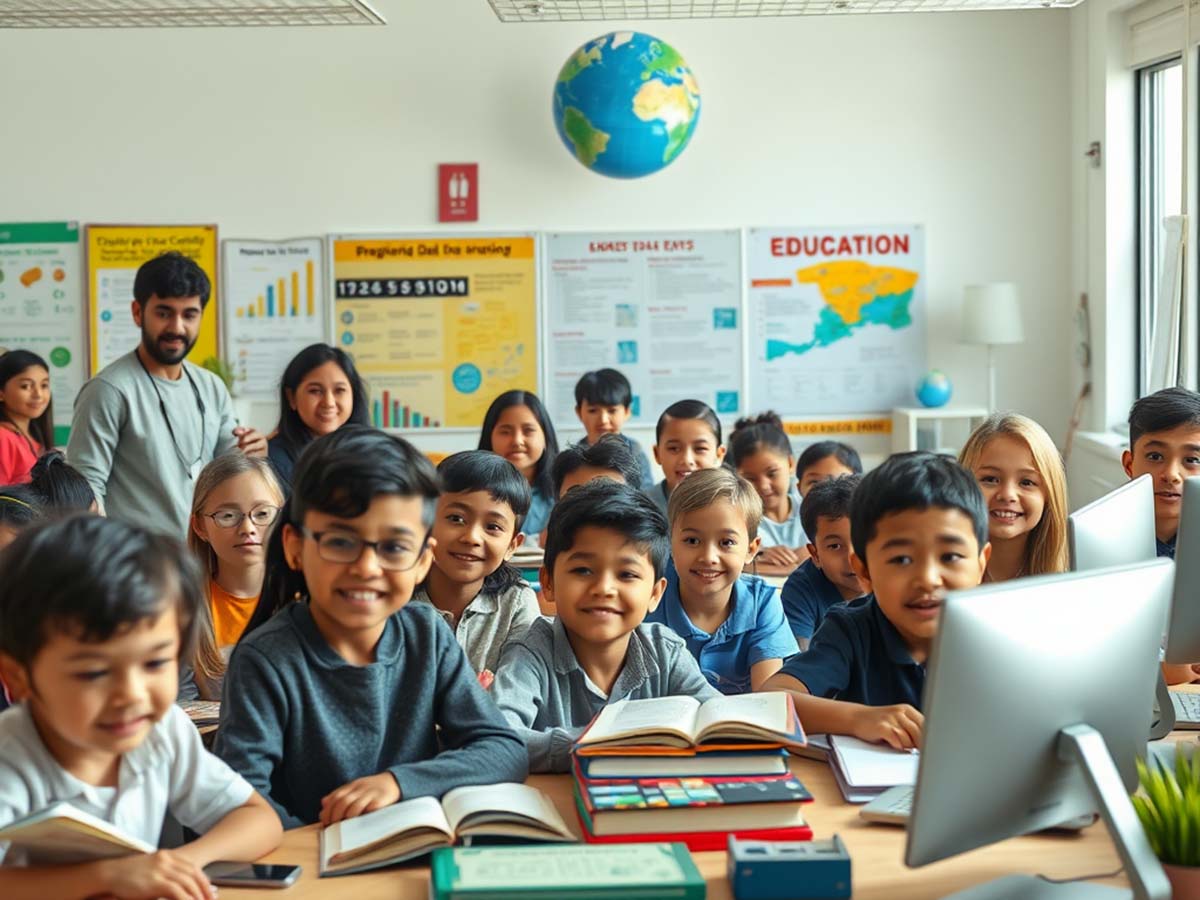Meaningful Education Data and Its Impact on Communities
Understanding the role of education statistics helps shape stronger and more progressive communities. Across different countries, focusing on the quality of learning continues to be one of the most effective ways to improve living standards, for both young and old. When numbers and facts are clearly presented, planning and delivering the right kind of support becomes more targeted and efficient.
Why Data Matters in Education
Tracking literacy rates, school enrollment, and completion levels paints a clear picture of how education is doing in a region. According to UNESCO, around 258 million young people aged five and above are not enrolled in school. These figures often highlight the difference between developed countries and those still facing challenges.
For instance, in some parts of Sub-Saharan Africa, enrollment is significantly lower than in more stable economies. The reasons often point to a lack of school funding, poor facilities, and too few teachers. This issue isn’t limited to a single community—it’s a concern on a global level. If left unaddressed, it affects not just individuals, but also the collective quality of life.
As the number of out-of-school youth increases, job opportunities become harder to reach for many. This widens the gap between rich and poor communities. To help manage this, global groups like UNICEF and the World Bank have stepped in with funding, teacher training, and broader access to learning. With data guiding their plans, these efforts become more focused and effective.
Education as a Path to a Better Life
Higher levels of education often lead to better job opportunities and safer working conditions. Research shows that finishing secondary school increases the chances of finding stable employment. The effects reach beyond income—it also contributes to better health and stronger participation in local activities.
Families with college graduates tend to pass on the value of learning to the next generation. This builds a cycle of support where younger relatives are encouraged to stay in school. With a solid educational foundation, people can keep up with changes in technology—whether through online learning or traditional classrooms.
How Learning Impacts Community Life
- Boosts job readiness and income potential
- Encourages better health and well-being
- Strengthens participation in community efforts
- Expands access to public programs and services
In areas with high literacy rates, people tend to be more informed about health, the environment, and civic duties. Communities benefit when residents can think critically and communicate well.
Real-Life Examples That Inspire
In Southeast Asia, there are schools in remote areas led by just a few dedicated teachers. These educators set up mini-libraries using donated books. Despite limited resources, students showed stronger reading and writing skills compared to those in more advanced settings.
Such examples prove how important it is to take action based on facts. When local leaders know how many children lack transportation, they can organize community rides. If they’re aware that families can’t afford school supplies, they can ask for help from donors. The key is using actual numbers to plan better and respond more efficiently.
Direct Link Between Education and Economy
Education directly contributes to a nation’s financial stability. As more people graduate, unemployment often goes down. A growing workforce also leads to increased tax revenue and higher national output. In some places, even when there are more college graduates than available jobs, the competition pushes sectors like tech and agriculture to improve.
Young people with strong educational backgrounds tend to drive small businesses and creative ideas. These startups generate income and jobs for others in the area. Being equipped with problem-solving skills makes them better prepared to build something meaningful.
Cultural Growth and Shared Understanding
Education shapes how people think and relate to one another. A society that values reading and critical thinking becomes more open-minded. This helps communities rally behind projects focused on nature, rights, and respect for diverse beliefs.
People also engage more in political discussions and elections. They understand policies better and can hold leaders accountable. This builds stronger partnerships between citizens and public officials, laying the groundwork for lasting progress.
How Technology Broadens Learning Access
New tools and online platforms are helping bring education to more people. Even in areas with poor internet access, some programs offer offline learning materials so that students can continue their lessons without interruption.
Blended learning is also gaining support, combining classroom methods with digital content. This includes video lessons, interactive tasks, and group chats. What matters most is having the right guidance from teachers and family members. By using feedback and learning data, programs can be adjusted to suit various needs.
Growing Support for Teachers and Schools
Many institutions are now investing in teacher training and school management. It’s not enough to have staff in place—what they know and how they teach matter too. Training often includes planning lessons better, managing classrooms, and supporting student mental health.
More organizations are also stepping in to offer scholarships and financial aid. These cover not just tuition, but also books, uniforms, meals, and transport. When students don’t have to worry about these things, they can focus more on learning.
The private sector and government play a key role too. With accurate reports on school needs, companies can help provide learning devices and supplies. Working together with clear goals makes the impact stronger and easier to see.
Learning and Overall Health
There is also a clear connection between education and health. People who stay in school longer are less likely to face early pregnancy or spread of certain diseases. Schools often run programs on nutrition, wellness, and personal safety.
Studies show that more years spent in school lead to a more positive outlook on life. Educated individuals tend to have higher self-confidence and make thoughtful choices. This reduces the chances of risky behavior and increases time spent in productive activities.
Giving Back After Graduation
Many graduates return to their hometowns to help others. They might share their skills with community groups or start businesses that offer jobs locally. These actions are more successful when supported by local leaders and policies.
Educated youth are also more likely to support transparency in governance. They can read and understand public reports, making them more active in community discussions. Their voices become part of shaping decisions that affect everyone.
Lifelong Learning for All Ages
Learning is not limited to the young. Adult programs and short courses are growing in popularity around the world. For those who didn’t finish school earlier in life, these options provide new chances to improve and get better jobs.
In some towns, book clubs and workshops help people connect with one another. These activities improve reading skills and build stronger social ties. Community learning doesn’t just build knowledge—it also fosters trust and cooperation.
Benefits That Grow Over Time
Education brings both immediate and long-term rewards. Some results are easy to spot, like improved literacy. Others take time, such as access to global jobs or the growth of local businesses.
Communities that value ongoing learning adjust faster to changes in technology, economy, and even agriculture. They become more open to things like remote work or digital payments—skills that have become even more useful in recent years.
Through careful study of education data, we gain a better sense of what communities need to grow stronger. Every effort to support learning, big or small, builds a foundation that benefits many. By taking action based on facts and compassion, we help shape a future that is more inclusive and sustainable for all.



